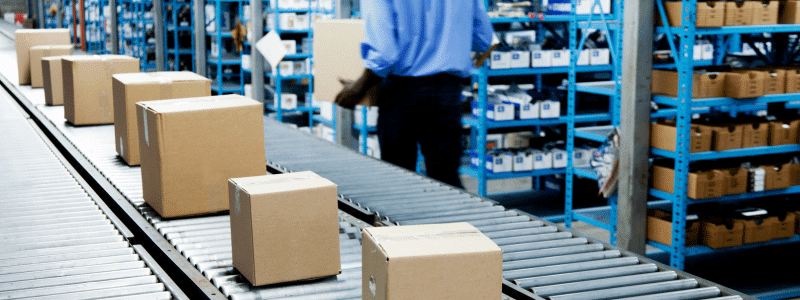This blog post was adapted from a live expert webinar with our partner, Longbow Advantage. Although resiliency has been top of mind for supply chain professionals over the past three years, it’s still a relatively new concept. For instance,...
This blog post was adapted from a live expert webinar with our partner, Longbow Advantage.
Although resiliency has been top of mind for supply chain professionals over the past three years, it’s still a relatively new concept. For instance, the Wikipedia page for “supply chain resilience” wasn’t created until March 2021 — a year after the pandemic first upended the world’s supply chains.
Supply chains have taken a beating since the discussion of resiliency became front-page news. Labor shortages, changing purchasing patterns, and even ships blocking the Suez Canal motivated the industry to find creative and innovative solutions that have largely brought supply chains back into normal operation.
But is resiliency just another buzzword like “cloud native” or “digital twin”? How much have supply chains really changed, and which changes will stick as organizations begin to look toward margins again? Perhaps most importantly, are the world’s supply chains prepared for the next disruptive event?
Meaningful progress toward true resiliency will take time. The supply chain industry’s new challenge is to keep the lessons learned during the pandemic at the forefront. Supply chain leaders need to rally the entire C-suite around a long-term approach that prioritizes resiliency while maintaining margins.
How Supply Chains Have Changed (And How They Haven’t)
It’s too soon for supply chains to have achieved true resiliency after only a few years of working toward it. True change takes time. So far, organizations have focused on persistence: being able to do tomorrow what they did today.
Persistence mostly took the form of redundancy. Companies invested in dual or multi-sourcing and inventory management — for once, “safety stock” wasn’t a bad word. But redundancy is not resiliency.
To make meaningful change in their supply chains, companies need to adapt and transform by incorporating persistence measures into their long-term strategies. This will require tough conversations as the pain of the pandemic begins to fade and pressure to increase profits mounts.

Resiliency or Profit Margins?
C-suites will soon face questions from boards that want to see higher margins than they accepted during the pandemic. Boards will push back on measures adopted to achieve resistance and limit disruptions. For example, they may encourage C-suite executives to begin sourcing through China again to reduce costs.
But the past few years have made it clear that a well-run supply chain can be a massive source of differentiation. At times, simply having inventory and being able to ship it was enough for a company to beat its competitors.
Now, as reverse logistics become commonplace, companies that can make shipping easy, seamless, and transparent will offer a competitive customer experience. It’s incumbent on C-suites to convince their boards of the long-term value of investing in supply chain resiliency.
Executives also need to remind their boards that supply chain disruptions have a long-term cost. McKinsey has found that, over the course of a decade, supply chain disruptions cost the average organization 42% of one year’s profits.
It may be difficult to justify making investments for an event that no one can predict, but this is the only way to make long-term, meaningful change.
What It Takes to Achieve True Resiliency
Board buy-in is essential, but it’s only the first step to building a resilient supply chain. Creating a programmatic resiliency strategy requires investing in multiple areas of change.
Technology Change
Technology and data are the cornerstones of resiliency. Organizations have largely mastered gathering data, but many still struggle to make use of it.
Over the past few years, supply chain leaders have gone from lacking visibility to being able to quickly understand where their products are — in warehouses or containers, on the ocean or in port. The next step is to move from visibility to proactive planning.
Artificial intelligence is getting a lot of attention within the industry, but it is not yet a silver bullet for scenario planning. Humans need to apply their judgment and intuition to model outputs so they can choose the best course of action during a disruption, especially since the next disruption likely won’t look exactly like the last one.
At the same time, data is not the answer to readiness and resiliency. It’s necessary — but not sufficient.

Cultural Change
Just as CEOs need to convince their boards to prepare for something that may not happen, they also need to convince their employees. Human nature is to strive for the next thing, but resiliency calls for reinforcing the foundation first.
Leaders also need to cultivate a culture of flexibility. A company may have fantastic visibility thanks to a strong data and technology foundation, but it needs to be able to react quickly and pivot based on the insights that visibility provides.
Organizational Change
The entire organization needs to be aligned to deliver resiliency in the supply chain. This requires strong top-down leadership and coordination, which may or may not mean hiring a Chief Supply Chain Officer.
Hiring a dedicated supply chain leader has its advantages — for example, they are best positioned to orchestrate processes across the organization. In large supply chains, it’s common for all sites to find their own efficient ways of working. A leader with purview across the entire supply chain can judge whether every site should follow common processes, even if that means sacrificing efficiencies at the site level for smoother overall operations.
With or without a Chief Supply Chain Officer, C-suite alignment is the most critical component for achieving resiliency. The CEO needs to champion the strategy. The CFO needs to understand the costs and impact of tactics like carrying more safety stock or sourcing regionally on margins. Supply chain is cross-functional, and sustaining investment in innovation demands cross-functional support.
Though the CEO must champion a strategy eventually, monumental shifts don’t have to start from the top down. Change can start when someone with a passion builds a team of people who share that passion and makes a case for transformation.
Reflect on the Past to Prepare for the Future
As the early years of the pandemic fade from memory, organizations have an opportunity to reflect. They should take this moment to think about the mountains they climbed and the big rocks they moved when faced with completely new challenges.
Now is the time to put programs in place that reflect the lessons the industry learned and to prepare for the next disruption.
Are you interested in learning more about implementing test automation in your warehouse system implementation? Read our customer success stories, check out additional blog posts, or learn more about the Cycle platform.
The post Supply Chain Resiliency: What We Learned From the Pandemic appeared first on Cycle Labs.












